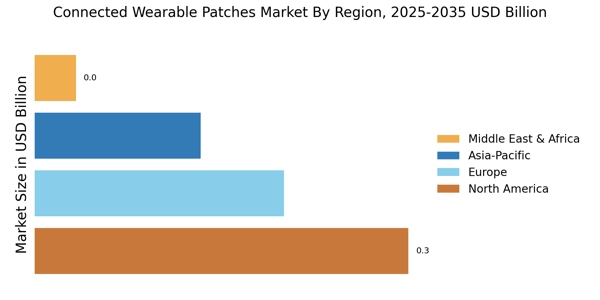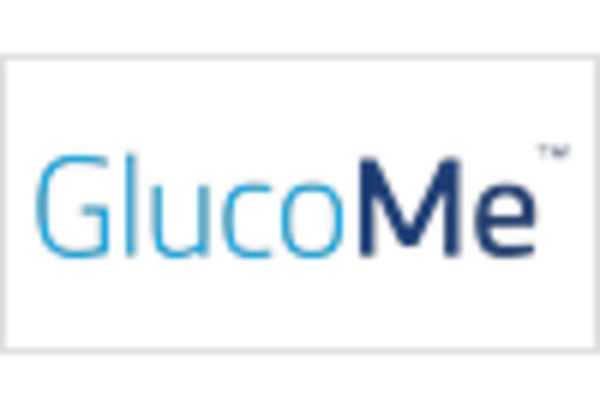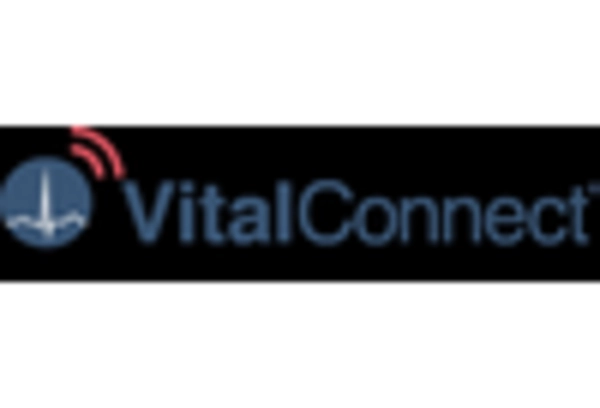Integration with Telehealth Services
The integration of connected wearable patches with telehealth services appears to be a pivotal driver in the Connected Wearable Patches Market. As healthcare systems increasingly adopt telehealth solutions, the demand for wearable devices that can seamlessly transmit health data to healthcare providers is likely to rise. This integration facilitates real-time monitoring of patients, particularly those with chronic conditions, thereby enhancing patient engagement and adherence to treatment plans. According to recent data, the telehealth market is projected to reach substantial figures, indicating a growing acceptance of remote healthcare solutions. Consequently, connected wearable patches that can interface with telehealth platforms may experience heightened demand, as they provide a convenient means for patients to share vital health information with their providers.
Rising Prevalence of Chronic Diseases
The rising prevalence of chronic diseases is a significant driver for the Connected Wearable Patches Market. With conditions such as diabetes, hypertension, and cardiovascular diseases becoming increasingly common, there is a pressing need for innovative monitoring solutions. Connected wearable patches offer a practical approach to continuous health monitoring, enabling patients to track their vital signs and manage their conditions more effectively. Market data suggests that the number of individuals diagnosed with chronic diseases is expected to increase, thereby driving the demand for wearable health technologies. These patches not only empower patients to take control of their health but also provide healthcare professionals with critical data to inform treatment decisions, potentially leading to improved health outcomes.
Technological Advancements in Wearable Devices
Technological advancements in wearable devices are transforming the landscape of the Connected Wearable Patches Market. Innovations in sensor technology, battery life, and data analytics are enhancing the functionality and appeal of these patches. For instance, the development of more accurate biosensors allows for precise monitoring of various health metrics, which is crucial for effective disease management. Furthermore, the integration of artificial intelligence and machine learning algorithms into wearable technology is enabling more sophisticated data analysis, which can lead to personalized health insights. As these technologies continue to evolve, the market for connected wearable patches is likely to expand, attracting both consumers and healthcare providers who seek cutting-edge solutions for health monitoring.
Growing Consumer Awareness of Health and Wellness
Growing consumer awareness of health and wellness is driving the Connected Wearable Patches Market. As individuals become more health-conscious, there is an increasing demand for tools that facilitate proactive health management. Connected wearable patches provide users with the ability to monitor their health metrics conveniently, fostering a culture of self-care and preventive health measures. Market trends indicate that consumers are increasingly seeking products that offer real-time health data, which can inform lifestyle choices and encourage healthier behaviors. This heightened awareness is likely to propel the adoption of wearable health technologies, as consumers recognize the value of continuous health monitoring in achieving their wellness goals.
Supportive Regulatory Environment for Wearable Technologies
A supportive regulatory environment for wearable technologies is emerging as a crucial driver in the Connected Wearable Patches Market. Regulatory bodies are increasingly recognizing the potential of wearable devices to enhance patient care and improve health outcomes. This recognition is leading to the establishment of clearer guidelines and standards for the development and deployment of connected wearable patches. As regulations become more favorable, manufacturers may find it easier to bring innovative products to market, thereby stimulating competition and driving technological advancements. Furthermore, a well-defined regulatory framework can enhance consumer trust in wearable technologies, encouraging wider adoption among patients and healthcare providers alike.


















Leave a Comment